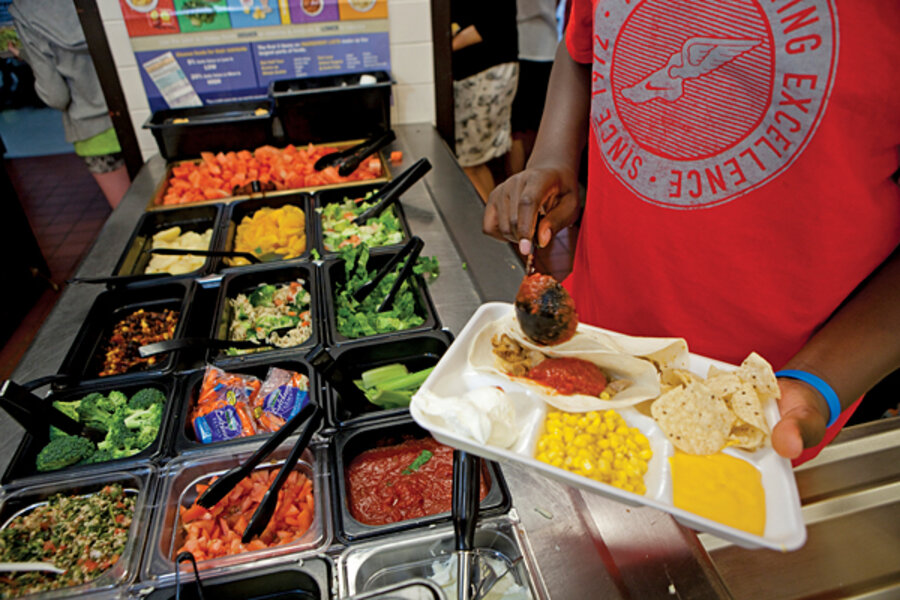Obesity in America: Schools on the front line of the fight
Loading...
Eat better. Move more. That's what more schools are urging young people to do to avoid becoming seriously overweight.
As society tackles obesity, many efforts center on schools' potential to create a generation of children who value staying active and eating balanced, less-processed meals.
"Schools have access to children in [Grades] K through 12 for almost 2,000 days of their lives, so schools have got to play a big role…. The whole goal of education is to change behavior to [make it] more positive," says Rhonda Clements, program director of physical education and sport pedagogy at Manhattanville College in Purchase, N.Y.
A big motivator for school officials may be the statistics: About 20 percent of people ages 6 to 19 were obese in 2008, up from less than 10 percent in 1980, reports the Centers for Disease Control and Prevention.
On the "move more" side of the equation, studies link fitness with better academic performance. Yet a 2011 study of 47 states found that 39 had no daily recess requirement, and 24 had no physical education requirement, Education Week reports.
About half of schools require physical education in Grades 1 through 5, a quarter in Grade 8, and less than 1/10th in Grade 12, Ms. Clements says. One-third of schools don't offer recess on a regular basis, according to a report by the Nutrition and Physical Activity Initiative of the Bipartisan Policy Center (BPC) in Washington, which advocates 60 minutes of physical activity daily in school.
Meanwhile, teachers are getting creative. In Charlotte, N.C., one physical education teacher incorporated measurement, geometry, and spelling into sports, jump-roping, and dance. Over two years, the share of students at or above grade level in math rose from 68 percent to 82 percent, according to a BPC report.
On the "eat better" side of the equation, new federal rules mean radically different menus in many school cafeterias this fall.
School meals now must include more whole grains, legumes, fruits, and vegetables, as well as age-appropriate calorie limits. For the first time, students will have to choose at least one portion of fruits or vegetables. And they'll have less access to sugary drinks and junk food in vending machines and school stores.
Cooking healthier meals will be a challenge for some schools. But others have already started down the path, offering salad bars and whole-wheat pasta salads.
It takes time for students to warm up to the new meals. But many schools now enlist kids as taste-testers, host visits from chefs and local farmers, and reward young children with "I tried it" stickers.
If kids don't find the food appealing, "we'll make healthy trash cans versus healthy children," says Helen Phillips, president of the national School Nutrition Association and nutrition director for Norfolk (Va.) Public Schools.
When children learn to enjoy healthy meals, that can influence their parents. "This year we got into roasting a lot of vegetables … and these were new for inner-city youth…. People tell me, 'My child asked for asparagus because he had it at school,' " she says.
In Andover, Mass., a popular recipe shared with parents and other districts is macaroni and cheese with butternut squash.
Andover public schools food-service director Gail Koutroubas started cooking for kids 25 years ago. Most school food was cooked from scratch back then; but it was gradually replaced by processed, packaged food that needed heating or frying. School cafeterias were tasked with making money, not serving healthy food, she says. She got rid of fryers about six years ago in Andover.
Now, with the new federal requirements, "things have come full circle," and she's glad. "I want to sell nutritious meals to kids…. In five years you want to say, look at how these [obesity] trends have reversed themselves."





